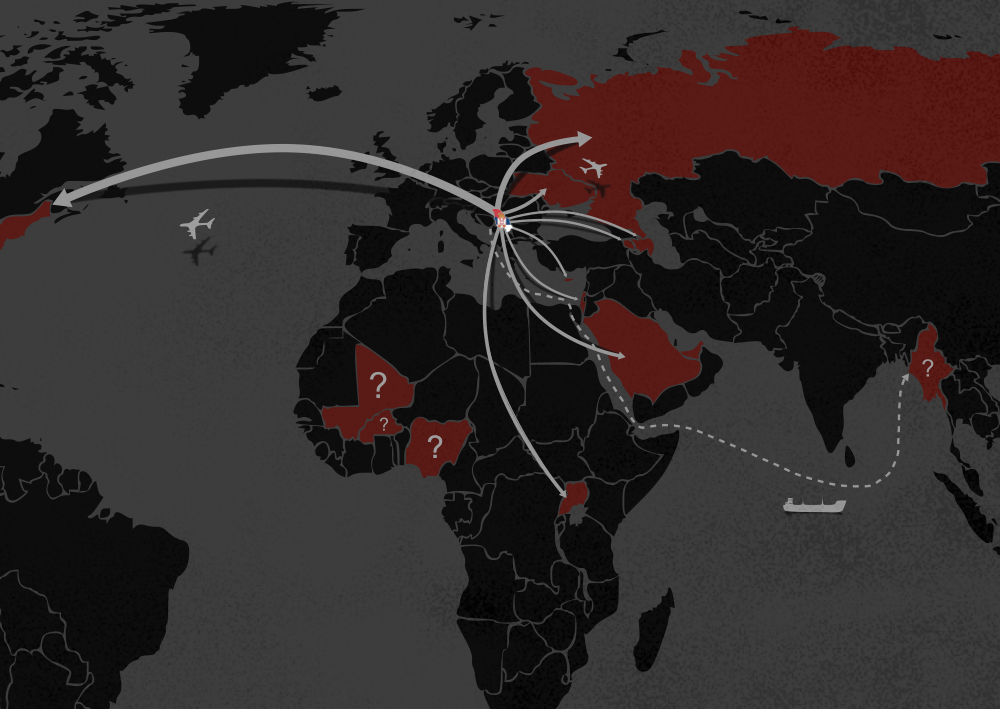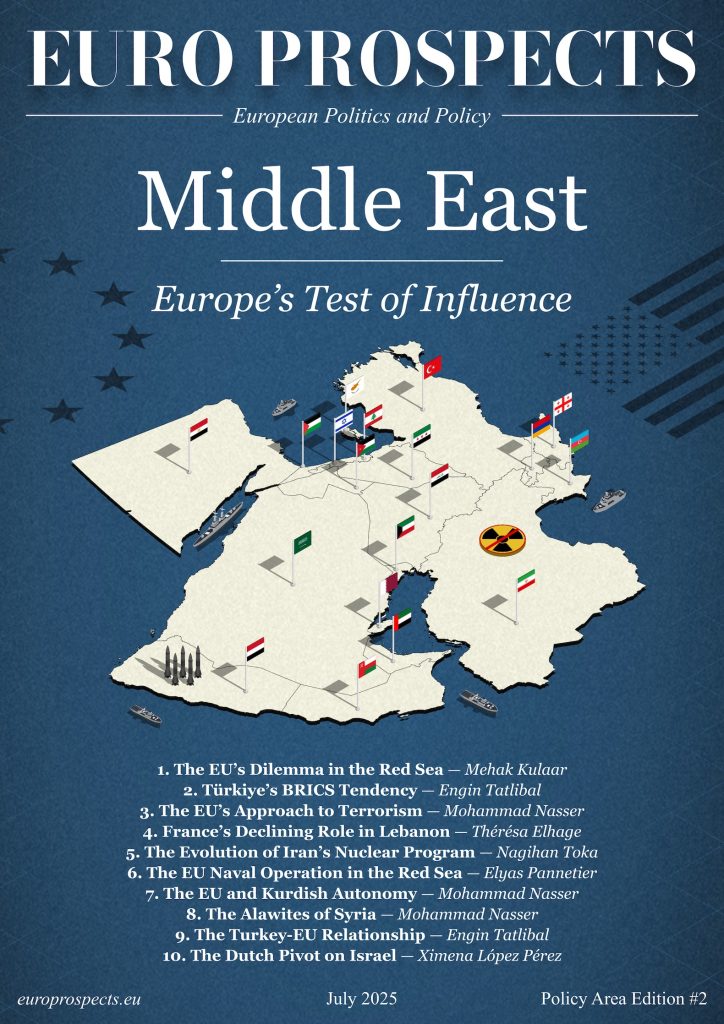8 min read — Analysis | Serbia | Military
Serbia’s Lucrative Global Arms Trade:
A Glimpse Into its Secrecy, Scheme, and Double-Edged Sword

By Aleksander Dragic – Correspondent for Serbia
July 3, 2024 | 15:10
It comes as no surprise that countries often boast influence through the showcasing of their military stockpiles. For Serbia, a nation with a robust defense industry, arms exports have become a crucial tool not just for economic growth, but also as a means of diplomatic leverage. By strategically supplying weapons and ammunition to various countries, Serbia navigates the complex waters of international relations, leveraging its military might to forge alliances, strengthen ties, and assert its influence on the global stage.
The question that emerges is thus whether these trades serve to improve Serbia’s influence, or represent a more lucrative activity for the government elite and its ruling party.
When examining Serbia’s arms trade, three factors are worth analyzing; namely, the type of arms exported and produced, their destinations, and Serbia’s political goals through these endeavours, set by most of its governments over the past 20 years.
Types of Arms Exported and Produced
There are over 200 companies both state-owned and private that deal with Serbian weapon manufacturing in one way or another. Most of the largest exporters such as Krusik, Yugoimport-SDPR, Sloboda, Namenska, and Zastava are all government-owned. They produce a wide variety of arms ranging from large and small caliber ammo, mortars, and explosives, all the way to armored vehicles and artillery systems.
The value of exports has increased exponentially over the last few years. In 2020, for instance, Serbia’s military exports were valued at $384,25 million. One year later, in 2021, it climbed around $500 million. In 2022, when the war erupted between Ukraine and Russia, it surged to $1,3 billion worth of arms exports, and in 2023 it jumped to $1,6 billion according to N1. Such dramatic change from $500 million to $1.3 billion, and then to $1.6 billion, would lead even the most news-oblivious individuals to conclude that significant conflicts are driving this increase.
Export Destinations
Where does such money come from? According to “Službeni Glasnik” (Government’s Offical Gazette) in 2021 around 16% of the exported arms went to the US, followed by Azerbaijan (14%), Uganda(9%), the UAE(8%), Cyprus(6%), and Saudi Arabia(5%). While these destinations might not look too suspicious, Serbian weapons have also been known to appear in some more questionable destinations.
One interesting example comes from the Second Nagorno-Karabakh War in 2020 when certain allegations claimed that Serbia was selling weapons to both sides of the conflict. The Serbian President denied these allegations, stating that Serbia considers both Armenia and Azerbaijan to be friendly countries and that no weapons were being exported to them during the conflict. A kind of answer that became a staple in the years to come.
The following year, in 2021, Serbia exported weapons (specifically rockets and missiles), via Belorussian private air carrier Rada Airlines, to Myanmar only a few days after the Military Coup. And on March 10, 2022, the European Parliament condemned Serbia, along with Russia and China for selling arms to the military junta in Myanmar.
Around the same year, Amnesty International reported that it had identified Serbian-made weapons being used by certain militant groups connected to the ISIS in the North African Sahel region (mainly Mali, Nigeria, and Burkina Faso).
Since the war in Ukraine began, there have been numerous reports of Serbian weapons (mostly artillery shells, ammo, mortars, and mines) being used by the Ukrainian army.
In July 2022, a Ukrainian plane carrying 12 tonnes of Serbian arms crashed in Greece, killing 8 Ukrainian crew members. Though officially headed for Bangladesh, the event raised many questions as to why a Ukrainian plane, operated by a Ukrainian crew, would deliver weapons to Bangladesh at the very moment Ukraine was in desperate need of weaponry. Serbian officials of course denied the allegations.
Then in April 2023, a classified Pentagon document leaked revealing that Serbia had agreed to supply Kyev with arms, according to Reuters. Though the Serbian president denied the claims following the leak, he would later appear on the Financial Times in June to say that it is possible that Serbian weapons and ammo have reached Ukraine through 3rd party countries. Russia demanded an official explanation from Serbia about the exports stating that it could affect relations between the two countries. Serbia’s answer was somewhat evasive stating that Serbia does not export its arms to countries in conflict but at the same time ignoring the fact that those weapons do end up in Ukraine through some 3rd party buyers. Russia seemed to be satisfied with that answer since there haven’t been any other official questions regarding the exports. That is until recently.
In late June this year, the Financial Times reported that Serbia had been stepping up its sales of ammunition which ends up in Ukraine and that the value of exported ammunition was estimated to be €800 million. President Vucic told the Financial Times that Serbia doesn’t export arms to either side of the conflict, but that it does sell to countries such as the U.S., Spain, Czech Republic, and others and that “what they do with that (weapons and ammo) in the end is their concern”. Russia’s response, in the form of Kremlin spokesman Dmitry Peskov, was that they would deal with these statements in contact with “Serbian friends”.
Perhaps a clearer, yet more subtle reaction from Moscow came in the form of a TV presenter and propagandist Sergey Mardan, who in his live broadcast insulted Serbia adding that “they are now enemies”. Though not official, Russian propagandists have been known to say things that the Kremlin thinks. This could prove to be another hit to the already deteriorating relationship that started with the Ukraine-Russia war mostly by Serbia voting against Russia during different UN resolutions as well as not recognizing Crimea as a part of Russia. Russia has in turn used Kosovo’s declaration of independence as a way to justify Crimea’s and Donetsk’s Independence referendums.
Most recently, exports have been destined for Israel, most notably through a recent €14 million arms export deal. Additionally, BIRN (Balkan Investigative Reporting Network) found that there have been at least two large weapons and ammunition shipments to Israel since October last year’s Hamas attack. All of these exports have been conducted under a veil of secrecy. This could complicate things between Serbia and Palestine, a relationship that has existed since 1988 when Yugoslavia recognized the Palestinian state.
Serbia’s Political Goals and Exports Inconsistencies
In recent history, every Serbin government since the turn of the century has been officially supportive of EU integrations. EU membership has, more or less, been a goal for the last 24 years. In December 2009 Serbia applied for EU membership and started its EU membership candidacy in 2012 — which coincided with the rise to power of the current ruling SNS party (Serbian Progressive Party) . During its 12-year rule, the SNS and the governments it had led always stressed that EU membership is its top agenda.
On the other hand, Serbia is burdened by the EU’s request to normalize its relationships with its breakaway province of Kosovo (which unilaterally declared its independence in 2008 and is recognized by most EU countries except for Greece, Cyprus, Romania, Slovakia, and Spain). The process of normalization has had its ups and downs with the EU-supported 2014’s Brussels Agreement being the most notable.
Since 2008 Kosovo has gained recognition from around 100 countries (most notably the US, UK, Germany, France, and Japan, to name a few). Serbia has thus led a strong anti-recognition campaign with somewhat moderate success. One may imagine that arms sales could therefore have something to do with buying support for anything concerning Kosovo’s international status.
But the facts indicate otherwise, especially since most of the countries importing Serbian weaponry and ammo are those that have already recognized Kosovo, with little-to-no chance of reverting their decision. Israel, for example, was one of the most recent countries to recognize Kosovo (2020) with Kosovo even opening its embassy in Jerusalem (2021).
Still, the question of political aim remains, and the fact that many of the weapons deals are done under the veil of secrecy, with weapons suddenly appearing in locations they were not legally exported to, raise a lot of concerns.
The problem is also not alleviated by the fact that many of the people responsible for weapons export, according to BIRN, have either family connections with someone from the ruling SNS (eg., Branko Stefanovic) or are under US sanctions (eg., Slobodan Tesic).
Of course, having a developed arms industry and an increase in exports is great and lucrative for any country, but the locations where those weapons end up are questionable. There is nothing wrong with exporting weapons and ammo to a country that is not involved in any conflict, but exporting weapons to war-torn areas can be taken as a fact that the country is siding itself with a certain side.
Puzzlement is hence exacerbated by the other fact that such trade activities theoretically go against Serbia’s policy of international neutrality — which is also written in its constitution —, thus possibly doing itself more political harm than lucrative merit. Yes, exports to the US, Israel, and Ukraine could give it a more favorable position when it comes to its relationship with the West, but exporting weapons to those who are not viewed favorably by the US and EU, such as Myanmar’s junta government for example, could damage its credibility as an EU candidate and partner.
Ultimately, this could just be another example of Serbia’s balancing act, where it tries to “please” every side while looking for some lucrative benefits in its midst. In Serbia, this is often called sitting on many chairs at once. But with the number of global conflicts increasing and international polarisation on the rise, there is a big chance that the country will have to choose sides sooner or later, at least when it comes to arms deals. In a world of a clear polarization sitting on many chairs can cause the one to end up on the floor.
Write and publish your own article on Euro Prospects
Subscribe to our newsletter – stay informed when we publish articles on pressing European affairs.

